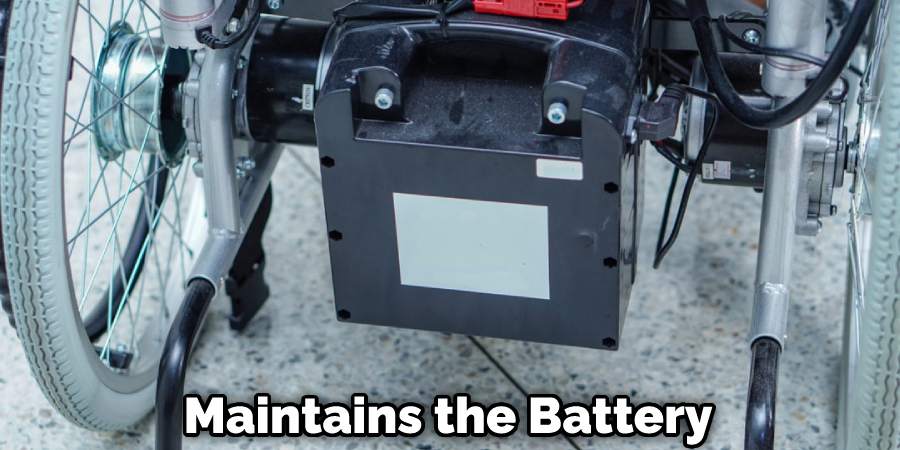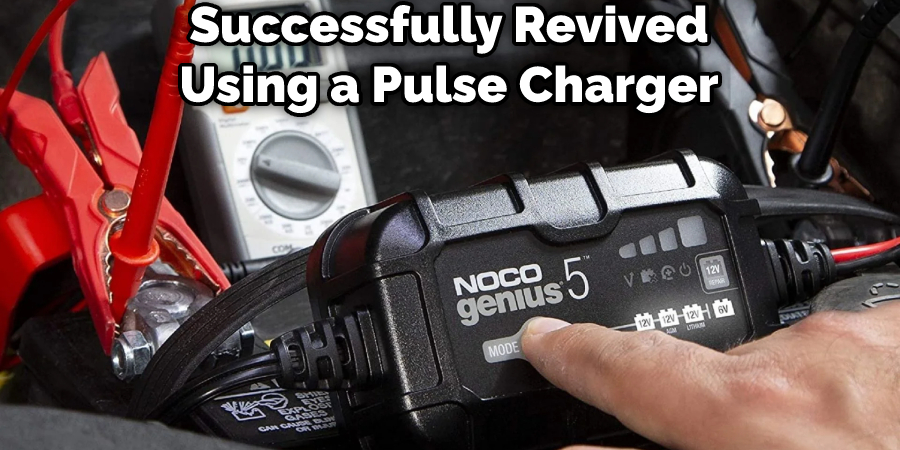For individuals who rely on electric wheelchairs for mobility, having a functional battery is essential for maintaining independence and quality of life. A dead or malfunctioning battery can cause significant inconvenience, and in some cases, even pose a safety risk. Understanding the common causes of a dead wheelchair battery, as well as how to charge and maintain it, can help wheelchair users ensure their device remains reliable and efficient.

In this comprehensive guide, we will discuss how to assess the condition of a dead wheelchair battery, choose the right charger, and follow how to charge a dead wheelchair battery. Additionally, we will provide tips on first-time charging for new wheelchair batteries and discuss maintenance practices to prolong the life of your battery.
2 Must Preparation Before Charging a Dead Wheelchair Battery
Before attempting to charge a dead wheelchair battery, it is important to assess its condition and choose the right charger.
Preparation 1: Assessing the Battery Condition
Before attempting to charge a dead wheelchair battery, it is crucial to assess its condition to ensure it can be safely revived. Taking the following steps will help you determine if the battery is suitable for charging:
Check Battery Terminals
Examine the terminals to make sure they are clean and in good condition. Ensure that the terminals are touching each other properly, as loose connections can prevent charging.
Inspect for Visual Signs of Damage
Remove any covers from both ends of the battery. Look for visible signs of damage, such as swelling, cracks, or leaks, which could indicate that the battery is unsafe to charge.
Consider the Battery’s Age and Usage History
Most batteries have a certain number of discharge cycles before they degrade. If a battery has been fully discharged too many times or is beyond its expected lifespan, it may not recharge effectively or safely.
If your assessment reveals any concerns or potential hazards, it is best to consult a professional or replace the battery rather than attempting to charge it. If the battery appears to be in good condition, you can proceed with the appropriate charging method.

Preparation 2: Choosing the Right Charger
Choosing the right charger for your wheelchair battery is crucial for maintaining its performance and longevity. Here are some guidelines to help you choose the correct charger for your wheelchair battery:
Use the Manufacturer-provided Charger
Always use the charger that came with your wheelchair, as it is specifically designed to optimize the performance and lifespan of your batteries.
Check the Battery Type
Wheelchair batteries can be lead-acid, gel, or lithium-ion. Make sure the charger you choose is compatible with the type of battery your wheelchair uses.
Verify the Voltage and Charging Current
Check the voltage and charging current specifications of your wheelchair battery and ensure that the charger you select meets these requirements. This information can usually be found on the battery label or in the user manual.
Look for Safety Features
Choose a charger with built-in safety features such as short-circuit protection, overcharge protection, and temperature monitoring to prevent damage to your battery and wheelchair.
Automatic Shut-off or Smart Charging
Opt for a charger with an automatic shut-off feature or smart charging technology that prevents overcharging and maintains the battery at an optimal charge level.

Check for Compatibility With Your Wheelchair’s Charging Port
Make sure the charger’s connector is compatible with your wheelchair’s charging port. If necessary, purchase an adapter to ensure a proper connection.
Read Reviews and Consult With Professionals
Read user reviews and consult with professionals or the wheelchair manufacturer for recommendations on the most suitable chargers for your specific wheelchair model and battery type.
By selecting the right charger for your wheelchair battery, you can help maintain its performance and extend its lifespan, ensuring that your wheelchair remains reliable and efficient for as long as possible.
7 Easy Steps for How to Charge a Dead Wheelchair Battery
Once you have assessed the battery condition and selected the appropriate charger, follow these steps to charge a dead wheelchair battery:
Step 1: Remove the Battery From the Wheelchair
To attempt to restore a dead battery, the battery will need to be removed from the electric wheelchair.
Step 2: Use a Pulse Charger
To charge a battery that has been depleted, you will need to use a pulse charger. A pulse charger functions a bit like a battery defibrillator, jolting the battery back to life.
Step 3: Connect the Battery to the Pulse Charger
Follow the pulse charger’s instructions to properly connect the positive and negative terminals of the battery to the charger.

Step 4: Charge the Battery
Allow the pulse charger to work its magic, and closely monitor the process. The charger will send pulses of energy to the battery, which may help restore its capacity to hold a charge.
Step 5: Check the Battery Voltage
After using the pulse charger, check the battery voltage using a multimeter. If the voltage has returned to a normal level, the battery has been successfully revived.
Step 6: Reinstall the Battery
Place the battery back in the battery box unit or the battery terminal of the wheelchair.
Step 7: Charge the Battery as Usual
Connect the battery to the wheelchair’s recommended charger and charge it as usual. Make sure to follow the manufacturer’s guidelines for charging times and procedures.
Please note that not all dead wheelchair batteries can be successfully revived using a pulse charger. If these steps don’t work or if the battery is beyond its expected lifespan, you may need to replace it with a new one.
You Can Check It Out to Get a Wheelchair Up Stairs.

4 Tips for First-Time Charging for New Wheelchair Batteries
If you have a new wheelchair or battery, it is important to perform an initial charge before using it. Here are some tips for first-time charging:
- Before doing anything else, give your new batteries a full charge using the charger provided with your wheelchair. This will ensure they are fully charged and ready for use.
- Charge the batteries for at least 8 hours, or as recommended by the manufacturer. This initial charge will help condition the batteries and maximize their performance.
- Avoid using the batteries until they are fully charged. This allows the batteries to reach their full capacity and ensures optimal performance.
- Repeat this process a few times to condition the batteries properly. After the first few charging cycles, you can start using your wheelchair normally.
By following these guidelines, you can ensure that your new batteries are ready for use and will provide reliable performance.
5 Maintenance Tips for Wheelchair Batteries
Maintaining proper charging habits and monitoring your wheelchair battery’s discharge cycles can help prolong its life and prevent issues. Here are some maintenance tips to keep in mind:
- Charge your battery regularly: Regularly charging your battery, even if it’s not completely depleted, can help maintain its health and prolong its life.
- Avoid overcharging: Overcharging your battery can damage its cells and reduce its overall capacity. Once the battery is fully charged, unplug it from the charger.
- Monitor discharge cycles: Wheelchair batteries have several discharge cycles before they degrade. Keep track of the number of cycles your battery has gone through and consider replacing it if it reaches its limit.
- Store your battery properly: If you’re not using your wheelchair for an extended period, remove the battery and store it in a cool, dry place. Make sure the battery is charged to at least 50% before storage.
- Watch for signs of battery degradation: If you notice that your battery is not holding a charge or is taking longer to charge than usual, it may be time to replace it.
By following these maintenance tips, you can help prolong the life of your wheelchair battery and ensure reliable performance when you need it.

FAQs About How to Charge a Dead Wheelchair Battery
Can You Charge a Wheelchair Battery With a Regular Battery Charger?
No, it is not recommended to charge a wheelchair battery with a regular battery charger, such as a car or automotive battery charger. Using an incorrect charger can cause irreversible damage to the wheelchair battery and reduce its performance and lifespan, typically lasting 12 to 24 months. Instead, you should use the off-board charger provided by the wheelchair manufacturer or a compatible 12-volt charger designed specifically for wheelchair batteries. Using the appropriate charger ensures optimal performance and longevity for your wheelchair battery.
How Many Years Does a Wheelchair Battery Last?
A wheelchair battery typically lasts 1-2 years with proper maintenance. The lifespan of the battery can be improved by properly charging and maintaining it. On a single charge, a wheelchair battery should generally last about 8-10 hours, with a range of approximately 10-15 miles. However, these specifics depend on the power wheelchair model, battery health, user weight, and terrain. In some cases, a good battery may provide a range of up to 20 miles.
Why Will My Wheelchair Battery Not Charge?
There could be several reasons why your wheelchair battery is not charging. Some possible causes include the battery being depleted or dead, battery terminals corroded or not properly connected, the charger malfunctioning or incompatible, and prolonged inactivity.
Conclusion
A dead wheelchair battery can be a frustrating and inconvenient issue for individuals who rely on electric wheelchairs for mobility. By understanding the common causes of a dead battery, assessing its condition, and following the appropriate steps to charge it, wheelchair users can ensure their device remains reliable and efficient.
Choosing the right charger and maintaining proper charging habits are crucial for prolonging the life of your wheelchair battery. Monitoring the battery’s discharge cycles and being mindful of signs of degradation can help you identify potential issues before they become major problems.
By following the guidelines outlined in this comprehensive guide, wheelchair users can take the necessary steps to charge, maintain, and maximize the performance of their wheelchair batteries. In case of any concerns or if issues persist, consulting a professional or the manufacturer can help ensure optimal battery health and safety.


